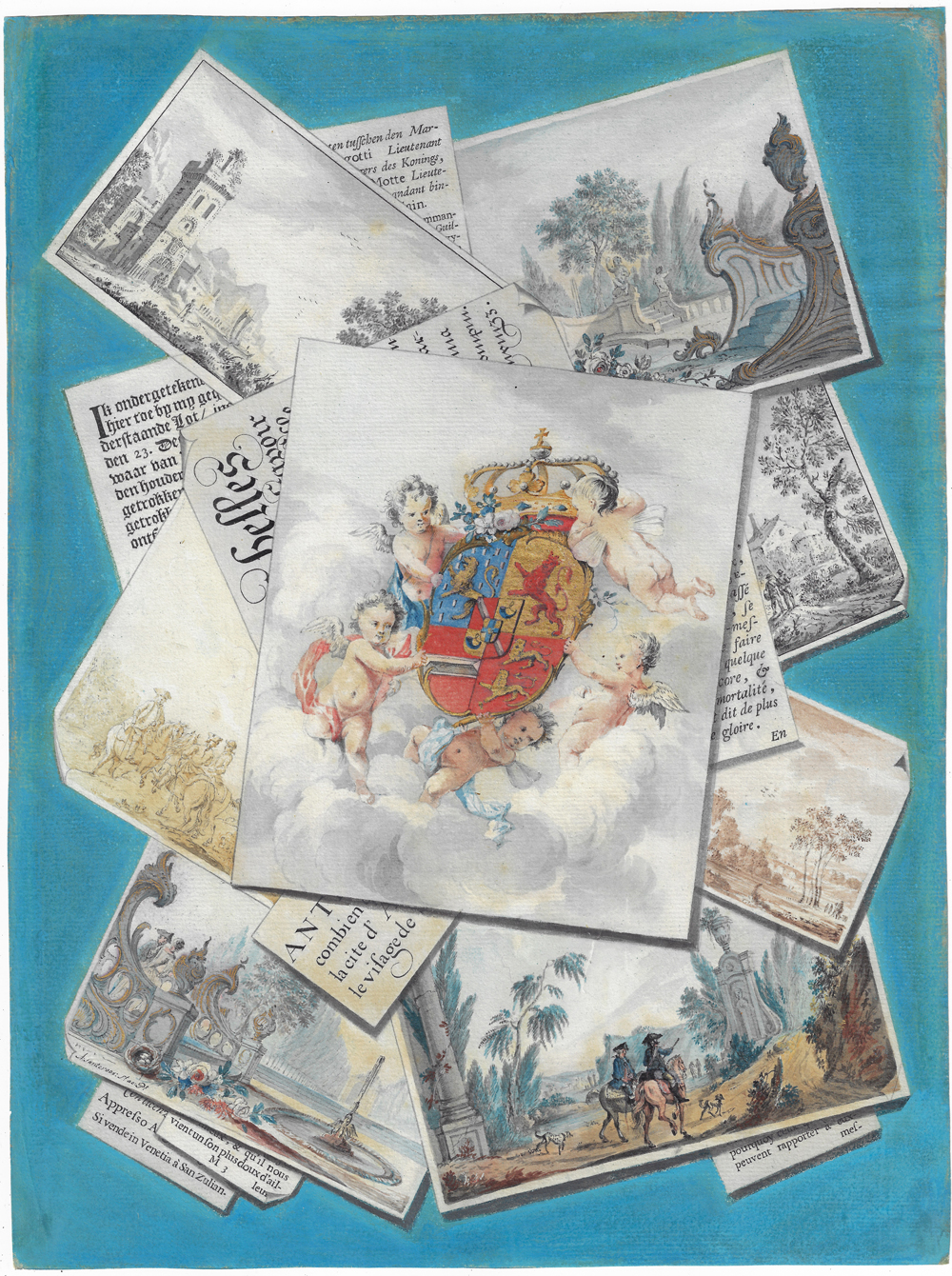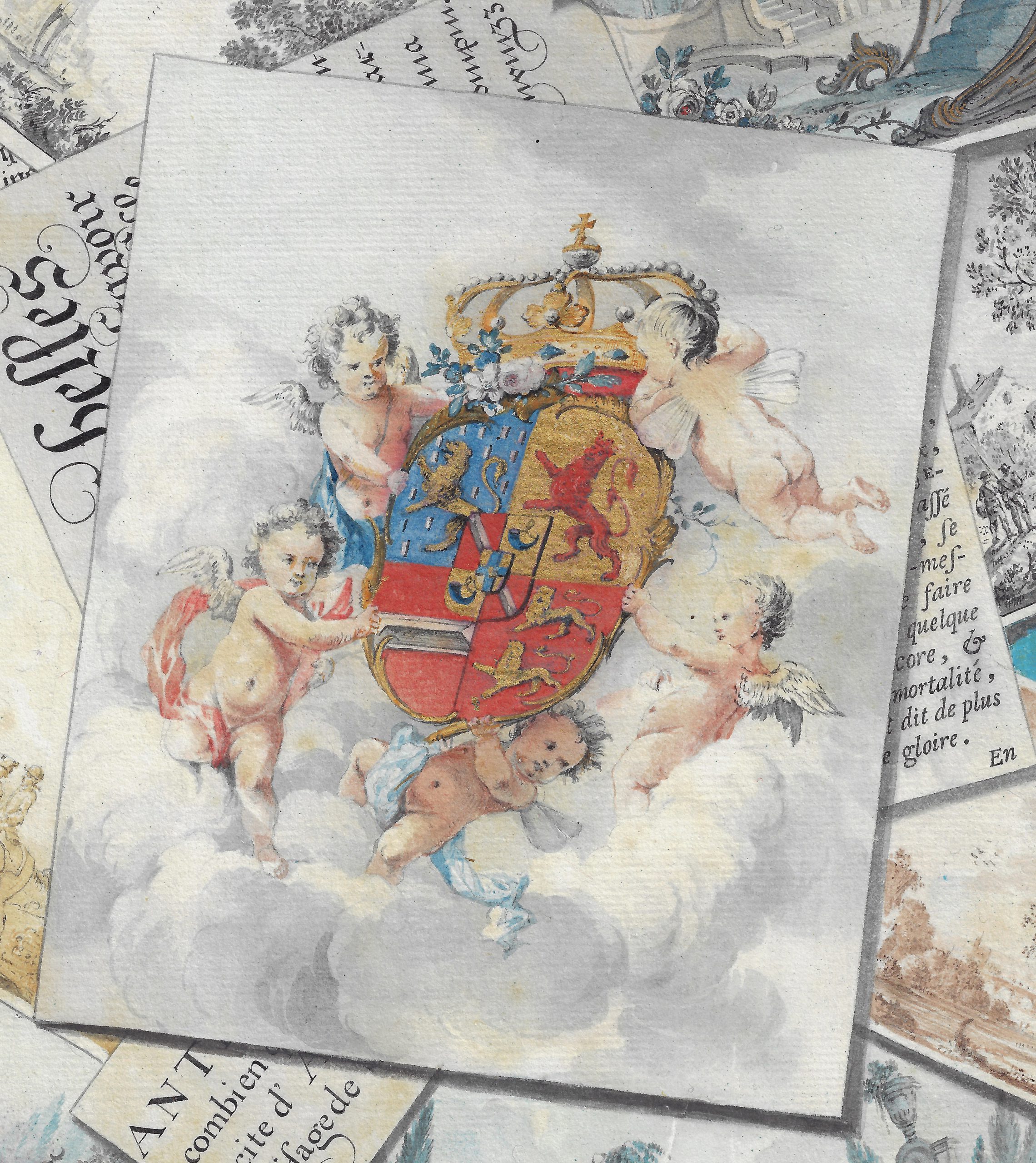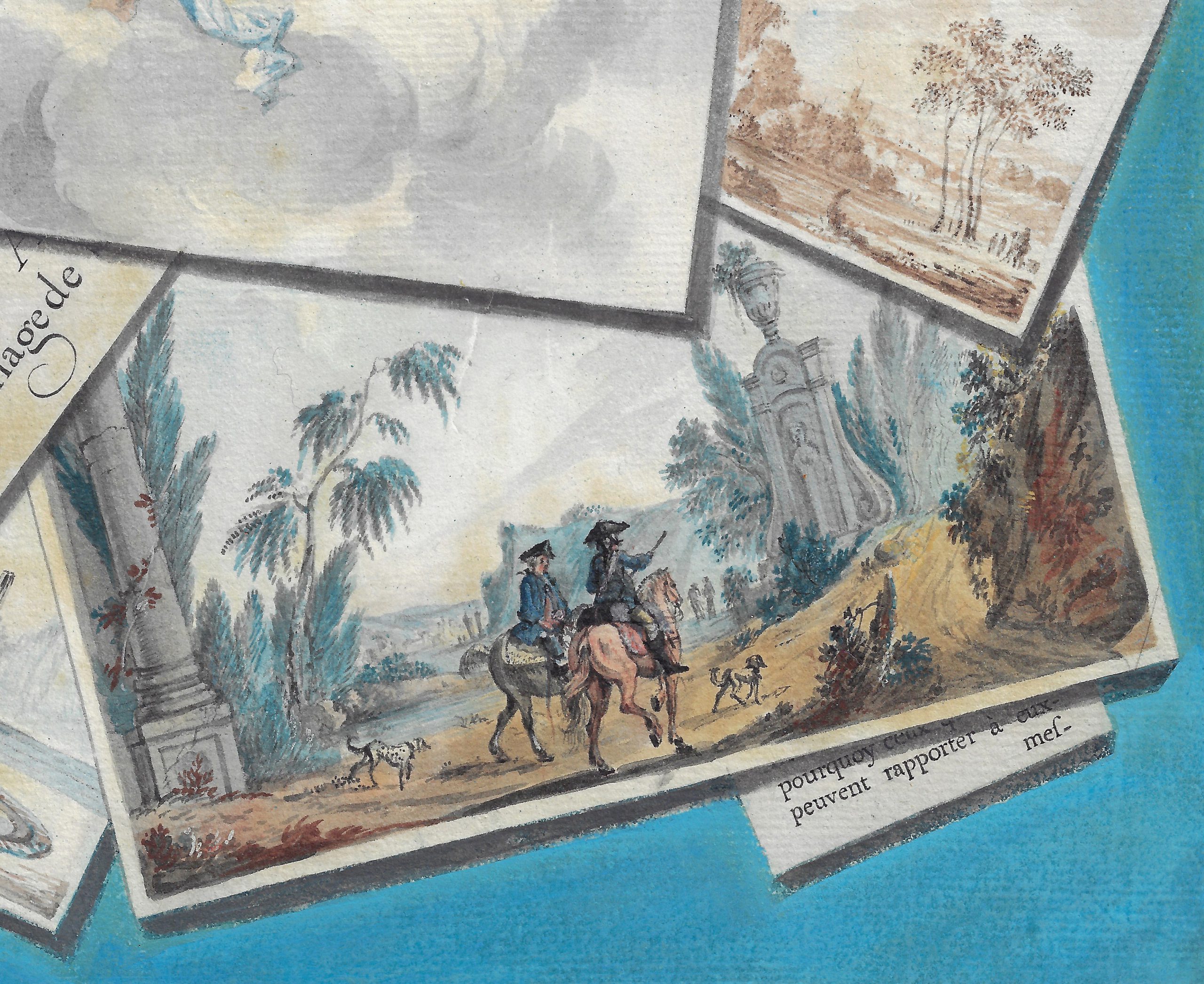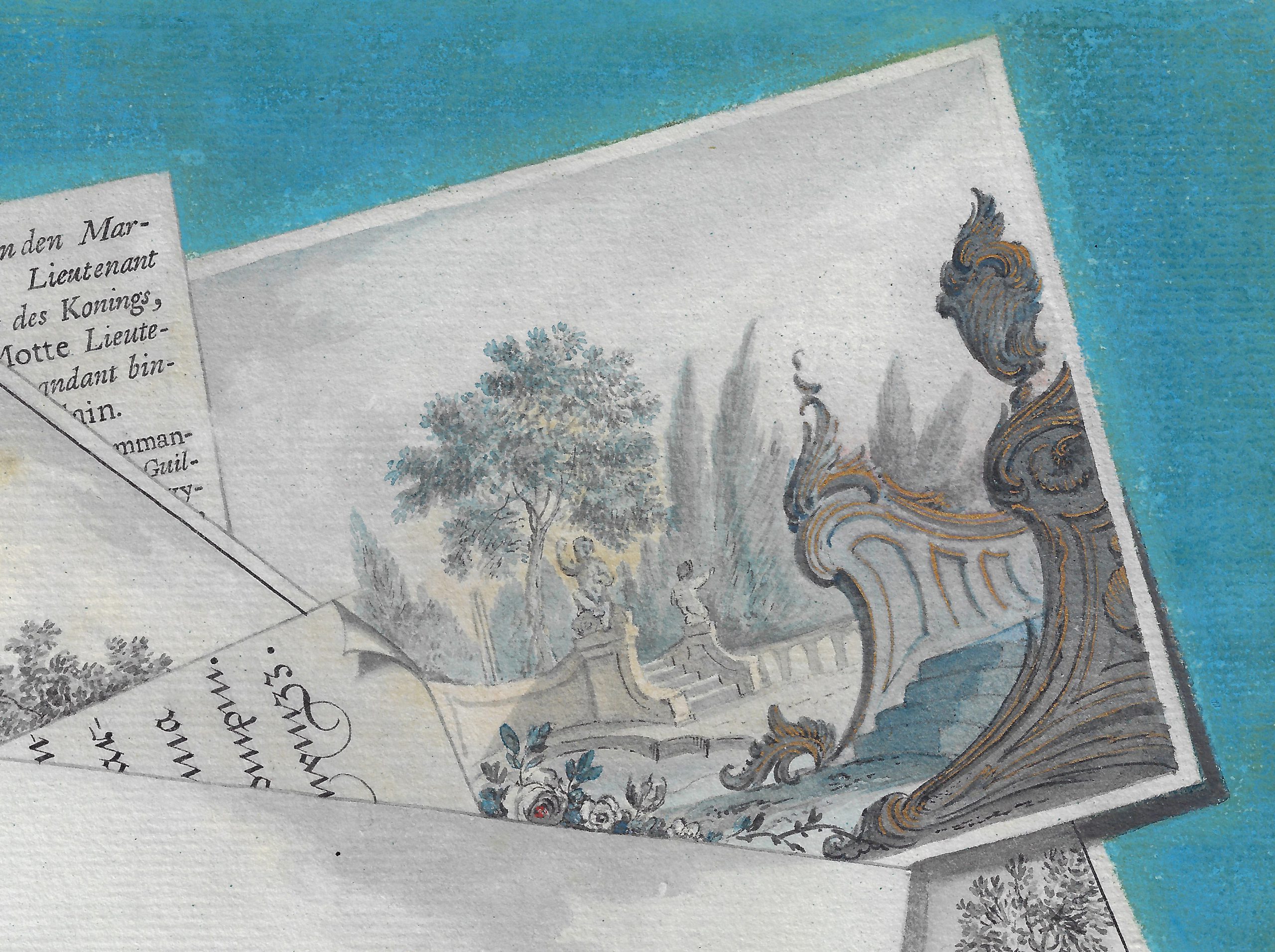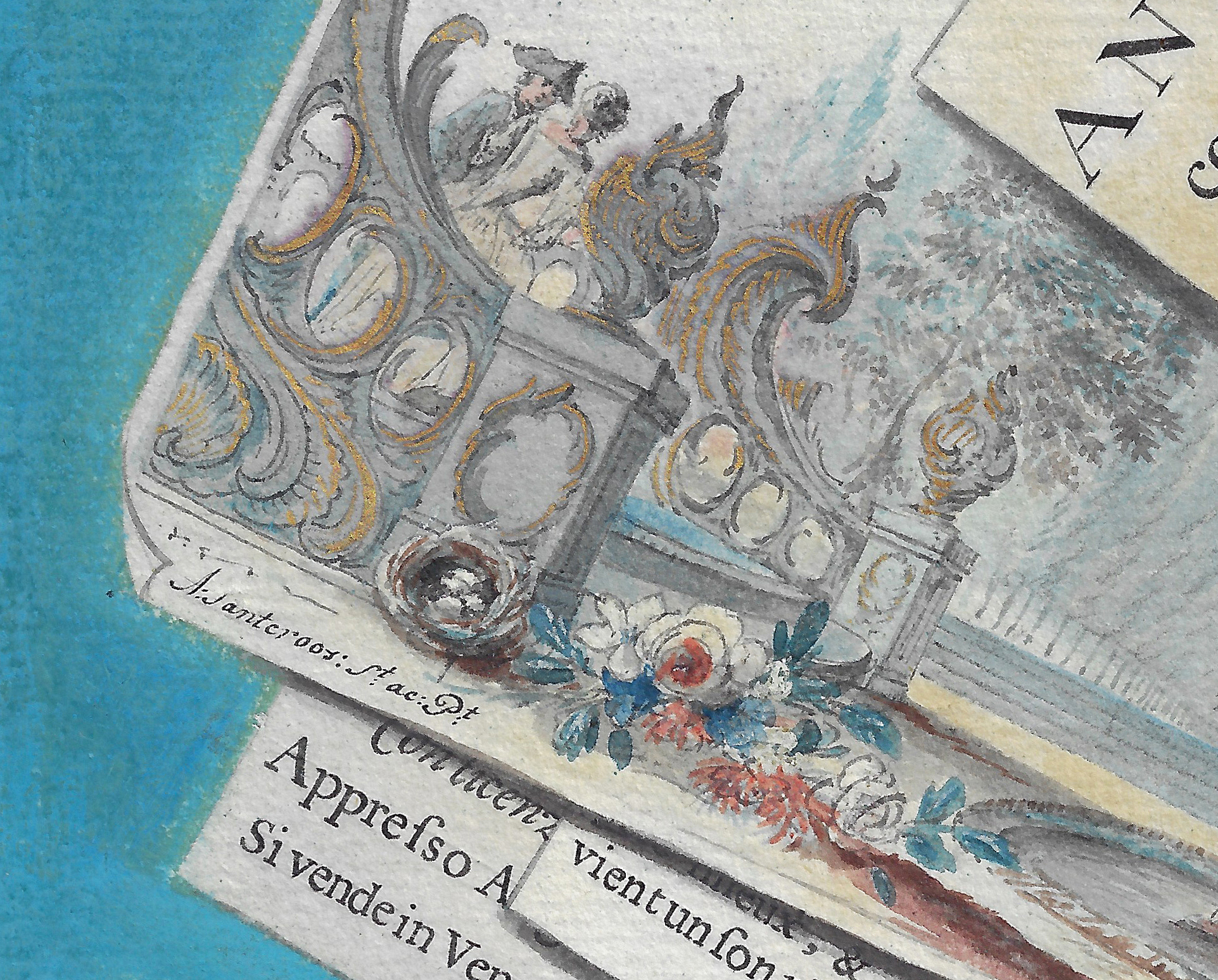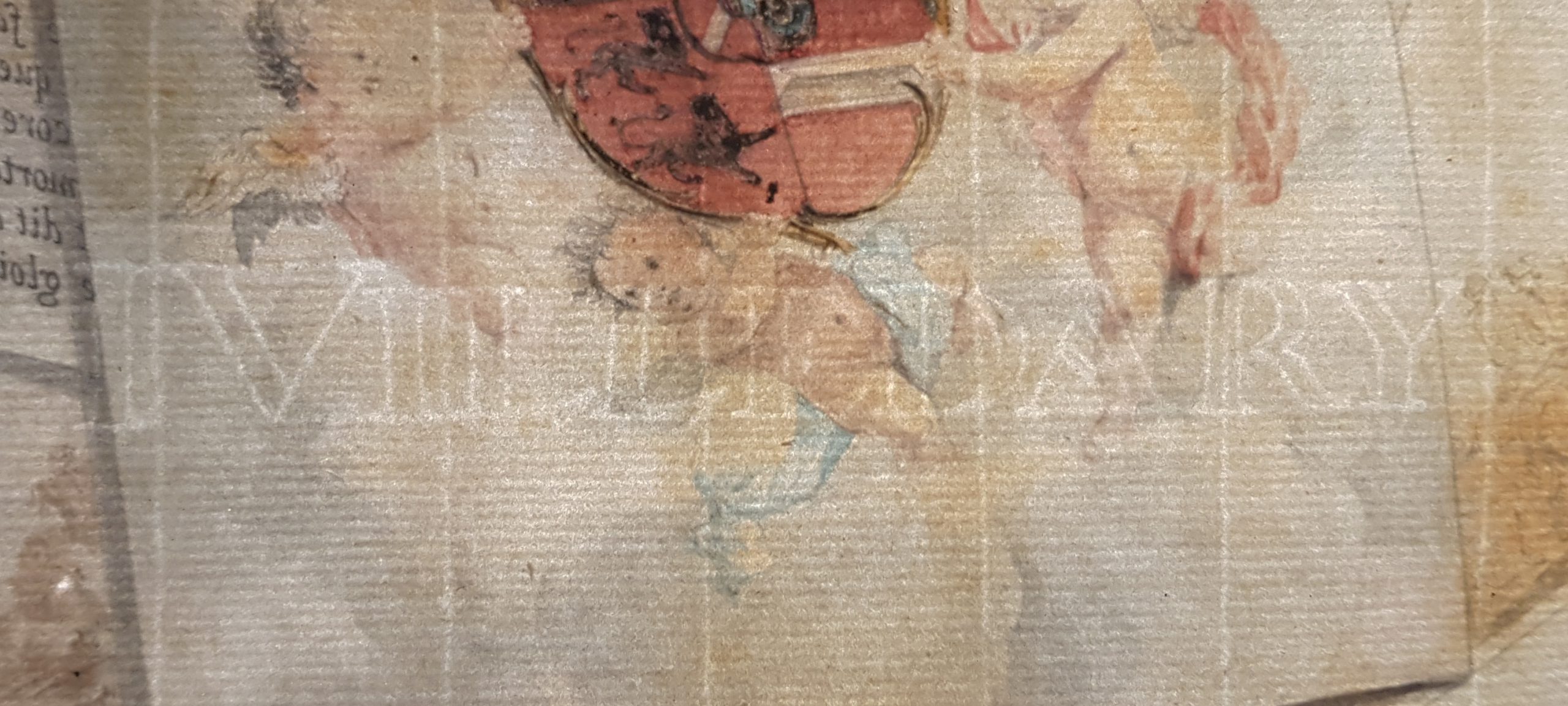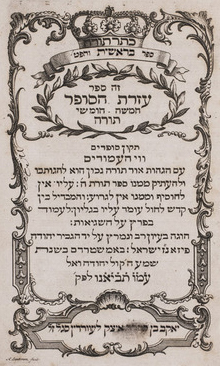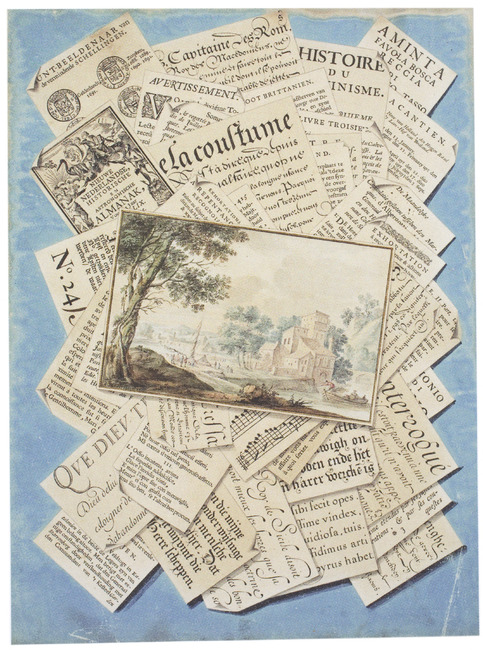AARON SANTCROOS (active Amsterdam, circa 1760-1791)
Aaron Santcroos (active Amsterdam, circa 1760-1791)
A ‘Bedriegertje’ with the Arms of Orange-Nassau
Pen and black ink, watercolour, gold leaf, watermark ‘I. Villedary’, 353 x 255 mm
Signed ‘A: Santcroos: St: ac: Pt:’ (lower left)
Provenance
~ Possibly sale Ten Dall, The Hague (Scheurleer), 13 April 1807, Album C, no. 84: ‘Twee bedriegers door Santeroos’
~ Private collection, The Netherlands
***
Aaron (or Ahron) Santcroos, also known as Sanctcroos, was an engraver of Jewish Portuguese descent, working in Amsterdam around the middle of the eighteenth century.1 Santcroos engraved title pages for the Hebrew Bible Chamishah Chumshei Torah: Tikun Sopherim, published in Amsterdam by Leib Soesmans in 1768; the great edition of the Talmud Bavli, published in Amsterdam from 1752 to 1768; and the Book of Ezra the Scribe, Sefer’Ezrat Hasofer, Hamishah Humshei Torah, published in Amsterdam by G.J. Janson for Israel Mondovy, 1767-69. The last dated work by Santcroos is a similar ‘bedriegertje’ with various trompe l’oeil ‘printed’ pages, drawings and watercolours arranged around the titlepage of the play Sabinus en Eponina by Jan Haverkamp, fully signed and dated 1791, which surfaced recently and is now also in the collection of White Rose Fine Art.2
This sheet is closely connected to a watercolour in the Teylers Museum in Haarlem (fig.).3 Apart from the present, the Teylers and the recently discovered ‘bedriegertjes’, only a few more drawings by the artist are known from references in historic auction catalogues, including two river views along the Vecht from the collection of Willem van Wessem, sold in Amsterdam on 6 April 1789, where the artist is described as ‘A. Santcroos de Lein’.4
The present elaborate watercolour is a tour de force of trompe l’oeil, an assemblage of various illusionistically rendered ‘pages’ around a central ‘sheet’ with putti drawn in the style of Jacob de Wit, holding the arms of the Orange Nassau family, partially executed in gold. The other ‘pages’ include trompe l’oeil ‘printed’ sheets, showing Santcroos’s meticulous skills in calligraphy, doubtless the result of his activities as a copperplate engraver. Other ‘drawings’ and ‘watercolours’ are executed in the styles of other draughtsmen of the period. We can only speculate as to the reason of the inclusion of the Orange Nassau arms: the sheet could have been specially commissioned by a fervent supporter of the Stadtholderly family.
SOLD TO TEYLERS MUSEUM, HAARLEM
1. For Santcroos, see Isidore Singer and Cyrus Adler (eds.), The Jewish Encyclopedia: A Descriptive Record of the History, Religion, Literature, and Customs of the Jewish People from the Earliest Times to the Present Day, 1916, p. 175.
2. Pen and brown ink and watercolour, 350 x 280 mm, signed and dated ‘An.= SantCroos Feçit. Ao: 1791.’.
3. Watercolour on paper, 349 x 267 mm, inv. no. TvB T 159; donated by Stichting Jhr. H. Teding van Berkhout, 2001; C. van Tuyll van Serooskerken, Een kunstkast gaat open: tekeningen uit de verzameling Teding van Berkhout, exh. cat. Haarlem (Teylers Museum), 1995, cat. no. 39.
4. Amsterdam (Van der Schley … Yver), 6 April 1789, Album D, no. 66: ‘Twee stuks gezigten aan de Vecht, langs de Ryweg, met verscheide stoffagie, uitvoerig met O. Inkt geteekent, A. Santcroos de Lein.’ (Two pieces views along the Vecht, along the road, with some staffage, elaborately drawing with India ink, A. Santcroos de Lein’. Two other views were included in the sale of the collection of Johannes Ulricus van Heijnen and Jacob Helmolt, held in Amsterdam (Van der Schley … De Vries) on 11 April 1811, Album F, no. 55: ‘Een Plijsterplaats en een Dorpgezigt. Met kleuren, door Santecoots’ (‘a resting place and a village view. With colours, by Santecoots’), sold for fl. 1.5 to ‘Poelle’).
